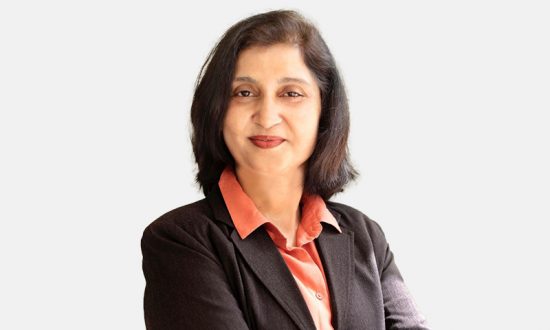Sushma Raturi is an enthusiastic professional educator with over 25 years of varied work experience in the field of education. She is an alumna of St. Mary, Shillong, who after obtaining a gold medal in her post-graduate course in Public Administration, decided to do her Bachelors in Education to pursue her childhood dream of being an educator. Currently, she is working with Seth Anandram Jaipuria Group of Schools as Head of Teaching, Learning and Training. She is Member Secretary of the Academic Council of Saamarthya Teachers Training Academy of Research (STTAR), a premier teachers’ training institute that aims to develop teaching competencies based on extensive research on all aspects of education.
The World Economic Forum estimates that 85 million jobs are likely to be displaced by 2025 due to a shift in the division of labour between humans and machines. At the same time, 97 million new roles could emerge which can adapt to this new division of labour.
As the world changes at a rapid speed, education, too, is witnessing a paradigm shift by developing innovative pedagogy, rethinking assessments and ensuring that new-age technology can be harnessed to develop a sustainable future.
Being future-ready is the need of the hour. This means that education must evolve to teach children the skills they require to flourish in the contemporary and future markets. The education sector as a whole need to be reimagined in order to stave off redundancy. It must be made ready to impart future skills to students. Teachers play a vital role in this. They need to develop necessary skills to be competent at making students future-ready.
During the Covid -19 pandemic and ensuing lockdowns, teachers were faced with a great responsibility of dealing with the sudden transformation in curricular practices through digital mode despite lack of appropriate training while also dealing with a changed student profile.
Teaching is by no means an easy task, particularly in the current day and age of frequent disruptions. Teachers have to juggle multiple responsibilities along with teaching with strategies to keep students interested, engaged and focused. They also need to be digitally competent to ensure purposeful use of ICT and digital media to achieve goals related to teaching and learning. We are now witnessing a transition, as teachers reinvent themselves to navigate the tectonic shifts in the education landscape.
It now becomes extremely imperative that the teachers update their skills with emerging techniques to bridge the skill gap. The range of skills necessary for quality student learning requires certain essential competencies and adroitness beyond academia. Besides acquiring pedagogical skills, 21st century skills like critical thinking, problem solving, creativity, meta-cognition, Socio emotional learning, communication, collaboration, media literacy, economic and financial literacy, civic responsibility and global awareness are equally essential.
If we are to prepare our children to deal with the unknown future, we must lay emphasis on teachers being well versed with a certain set of skills to be future oriented. It might even require reconceptualising how they can be supported so as to foster growth and development of students.
The question before us is this: What are the skills that will make them current to deal with the fast changing educational scenario?
All decision makers, school leaders and educators need to collectively focus on the existing approach in skill development towards creating a broad set of new age skills. Bolstering teacher capabilities for acquiring a large breadth of skills is the need of the hour but providing training for dissemination of those acquired competencies is equally important and challenging too.
The first step to boost skill development is by sharing clear-cut expectations of essential skills with all the educators and reaching a common understanding. This is followed by observing the current skills through class observations using a specific measuring tool, the framework of which has clear parameters with well-defined indicators to capture the current skills. This will lead to the identification of the gaps that exist. The framework needs to be tweaked for different sets of educators – academic and non-academic and be tailored to the details of their work.
Ideally, a teacher development plan with focus on skill specific domains need to be prepared to monitor their progress. This may provide them the directions to upskill themselves and get a fair idea about which skills are central and which are peripheral to their requirements.
Accordingly, training programs can be designed to enhance the skillsets to meet the demand. However, these training programs must be planned with utmost care so as to match the needs of the participants.
Plugging skill gaps is a very exacting and arduous task and must commensurate with the right cultural fit, gap analysis and trainings.




